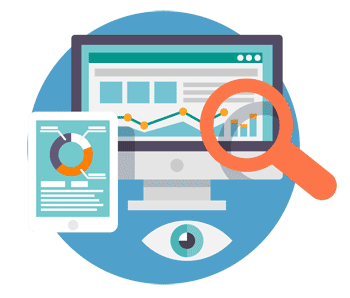For many artists, online art sales offer vast and varied opportunities to expand their reach and income. Selecting the right platform to sell art online is not a decision to be taken lightly, as each caters to different categories of artists, art lovers, and collectors.
The best places to sell art online encompass a broad array of platforms, each offering unique features to accommodate various types of art and selling needs.

There are diverse categories of websites available for selling art online, each with its unique characteristics and advantages. They include online marketplaces like Etsy and eBay, dedicated art platforms like Saatchi Art and Artsy, print-on-demand platforms such as Society6 and Redbubble, and art portfolio platforms like Behance and ArtStation. Other options include art commission platforms, artist website builders, and stock art websites.
Here’s a table summarizing the seven platform categories covered in this article, along with a brief description of each.
| Platform Category | Description |
|---|---|
| Online Marketplaces | These platforms offer a wide variety of products beyond art, giving artists a broad audience to reach. Examples include Etsy, eBay, and Amazon Handmade. |
| Dedicated Art Platforms | These platforms focus solely on art, making them ideal for those selling high-quality prints or originals. Examples include Saatchi Art and Artfinder. |
| Print-on-Demand Platforms | These platforms allow artists to sell prints of their work on a variety of products, from canvases to phone cases. Examples include Society6 and Redbubble. |
| Art Portfolio Platforms | These platforms allow artists to showcase their work in a portfolio format, providing potential buyers a comprehensive view of their style. Examples include Behance and ArtStation. |
| Art Commission Platforms | These platforms connect artists with clients who want custom art pieces, allowing artists to work on unique projects tailored to the client’s specifications. Examples include ArtCorgi and Sketchmob. |
| Artist Website Builders | These platforms allow artists to build their own websites, providing them with full control over how their art is displayed and sold. Examples include Art Storefronts and Squarespace. |
| Stock Art Websites | These platforms are for artists who want to sell digital copies of their work for commercial use. Examples include Shutterstock and Adobe Stock. |
Each of these categories offers distinctive benefits for different types of artists and art forms. The following sections will provide an overview of these platforms, evaluating each one based on its features and suitability for various types of artists.
1. Online Marketplaces

Online marketplaces are broad-spectrum platforms where one can sell your original artwork or prints alongside countless other products. These platforms often attract large, diverse audiences, which can lead to increased exposure for artists.
Read our Post: Why You Should be Selling Art On Etsy
Etsy is a renowned marketplace popular for its handmade, vintage items, and craft supplies. Its unique focus on creative goods and crafts makes it a go-to platform for buyers looking for unique, one-of-a-kind items. Artists can benefit from Etsy’s easy-to-use interface, its established reputation as a place for quality creative goods, and the support provided through seller’s resources and community forums.
Etsy’s audience tends to appreciate the effort and creativity that goes into producing handmade items, making it an excellent platform for artists who specialize in handmade pieces, unique crafts, or art prints. However, the platform charges listing and transaction fees, so artists should take these into account when pricing their artwork.
Read our Post: An Artist’s Guide to Selling Art on eBay
eBay is a well-known online marketplace that facilitates both auction-style and fixed-price sales. eBay can be a beneficial platform for artists who are selling unique, original pieces and want to allow the market to determine the price through bidding. Additionally, eBay’s global reach can provide artists with extensive exposure.
However, artists should be aware that eBay charges a percentage of the final sale price, which can impact profitability. Additionally, while eBay has a category dedicated to art, the platform’s vast array of goods can sometimes make it harder for artists to stand out.
Amazon Handmade offers artisans the opportunity to sell their handcrafted products directly to Amazon’s colossal customer base. For artists who create unique, handmade pieces or limited series, Amazon Handmade could significantly boost visibility and sales.
However, to maintain the platform’s handmade focus, all products on Amazon Handmade must be made entirely by hand, hand-altered, or hand-assembled. Additionally, Amazon charges a referral fee for each sale, and competition can be fierce due to the high volume of products available.
Bonanza is an online marketplace that has been dubbed a ‘seller-friendly’ version of eBay. Artists can list their artwork alongside a variety of other goods, offering fixed prices for their items. While Bonanza does not have the same level of recognition or traffic as other platforms, its lower fees and smaller crowds could create a more manageable environment for artists who are new to selling art online.
Furthermore, Bonanza offers various marketing tools, such as the ability to import your existing listings from other platforms like Etsy or eBay, which can make managing your online store easier.
iCraft is an online marketplace focused exclusively on handmade art and crafts. This platform is ideal for artists specializing in crafted products, as it offers a dedicated audience of buyers interested in handmade pieces. iCraft’s focus on the artisan community helps ensure that your work is seen by buyers who appreciate the time and talent involved in creating handmade pieces.
iCraft charges a fee to set up a store but does not take a commission from sales, which could be advantageous for artists who plan to list a significant volume of work.
Other Marketplaces
There are several other online marketplaces where artists can list their art. For example, ArtFire is a marketplace for indie, handmade, and vintage items. Zibbet offers a platform for artists and makers to sell their handmade products and fine art. UK-based Folksy is another site dedicated to handmade crafts and supplies.
When choosing an online marketplace, artists should consider factors like the platform’s popularity, user interface, cost of listing and selling items, and its suitability for their particular type of art. Each platform offers different features and focuses on a unique buyer demographic, so it’s important to understand who your target audience is and what platform they’re most likely to use.
2. Dedicated Online Art Platforms

Dedicated art platforms are online spaces specifically tailored to the needs of artists and art collectors. They focus solely on the sale of artwork, setting them apart from broader online marketplaces. These platforms are typically curated, ensuring a certain level of quality, which can add to an artist’s prestige and credibility.
Saatchi Art is a leading online art gallery that allows artists to sell their work directly to art collectors worldwide. The Gallery showcases a wide range of artwork, including paintings, photography, sculptures, drawings, and prints. The platform’s curatorial team reviews every artist’s work, which adds prestige to artists featured on the site.
For artists producing fine art pieces, Saatchi Art provides an excellent opportunity to reach serious collectors and first-time buyers. The platform handles all aspects of the selling process, including marketing, payment processing, and worldwide shipping. However, this comes at a cost, as Saatchi Art takes a 35% commission on every sale.
Artfinder is a global online marketplace selling original artwork from independent artists. It caters to various art styles, from painting and printmaking to sculpture and photography. Artfinder’s mission is to make art accessible to everyone, and they do so by providing a platform where artists can connect directly with buyers.
Artfinder is a great platform for artists who want to sell their original works and maintain control over their pricing. Artists can also manage their inventory and engage with their customers directly. Artfinder takes a commission on sold works, and artists must apply to sell on the platform to ensure quality control.
Artsy is a unique platform that brings together leading galleries, museums, art fairs, and auction houses to offer a vast collection of art online. Unlike most other platforms, artists can’t sell their work directly on Artsy. Instead, they must be represented by a gallery or institution that partners with the site.
This makes Artsy an excellent platform for established artists with gallery representation looking to expand their reach. It offers access to an extensive network of international art collectors and enthusiasts. However, it’s not as accessible for emerging artists or those who aren’t yet represented by a gallery.
Other Dedicated Art Platforms
Other dedicated art platforms cater to different needs and offer varying services for artists. For instance, Artplode is a platform where artists, galleries, dealers, and collectors can list artwork for a one-time fee, with no commission taken on sales. This is a major advantage for artists looking to keep more of their earnings.
On the other hand, UGallery is a curated online art gallery representing a select group of artists. While it takes a 50% commission on sales, it provides artists with extensive exposure. It handles all shipping logistics, which could benefit artists looking to reach a wider audience without dealing with logistical hassles.
When deciding on a platform, artists should consider the type of art they create, the audience they want to reach, and the level of marketing and logistics support they require.
3. Print-on-Demand Websites

Print-on-demand platforms are a unique online marketplace that allows artists to sell prints of their original works. These platforms take care of fulfillment, making it easier for artists to focus on creating their artwork. They allow artists to reach a larger audience without the overhead costs of producing, storing, and shipping their art.
Read our Post: Selling on Society6 for Artists
Society6 is a popular print-on-demand platform that enables artists to sell their work on a wide range of products, from art prints and tapestries to clothing and home decor items. Once an artist uploads their artwork, they can decide which products to feature it on and set their pricing.
The great advantage of Society6 is that it allows artists to reach a broader market with their designs without worrying about inventory management or shipping. It’s an excellent platform for artists who create digital art and designs that can easily be reproduced on various products. However, since the company sets the base price for products to cover their production costs, artists should know that their profit margin depends on how much they mark up the price.
Read our Post: Selling on Redbubble for Artists
Redbubble is another print-on-demand marketplace that allows artists to sell their designs on many items. From wall art and apparel to home goods and stationery, artists can choose how their art is displayed and what products it can be printed on.
What makes Redbubble stand out is its artist-centered community. Artists can join groups, participate in challenges, and learn from each other. This platform is ideal for artists with versatile designs that can adapt to various formats and mediums. Like Society6, artists only earn the markup they set beyond the base price, so a pricing strategy is essential to make a substantial profit.
Fine Art America is the world’s largest online art marketplace and print-on-demand technology company. They help artists, photographers, graphics designers, and more create and sell print-on-demand products.
Fine Art America stands out for its wide range of products and comprehensive set of features. It provides a customizable online storefront, marketing tools, and the ability to offer originals as well as prints. This platform is well-suited for artists and photographers who want to sell high-quality prints, framed prints, and canvases. While the site allows you to set your own prices, they do take a base price to cover production costs.
Other Print-On-Demand Platforms
In addition to the platforms mentioned above, there are numerous other print-on-demand services. Printful allows artists to create and sell custom products with their own designs. Zazzle enables artists to sell designs on more than a thousand products. TeePublic specializes in apparel, making it an excellent choice for artists creating clothing designs.
Each platform has its own strengths and limitations, so artists should consider the nature of their work, their intended audience, and the level of control they want over pricing and products when deciding where to sell their art.
The Broken Promise of Social Media for Artists and What You Can Do About It
A Wake-Up Call for Artists Relying on Likes to Sell Their Work 📉 Declining Reach | 🧠 Algorithm Fatig…
4. Art Portfolio Platforms

Art portfolio platforms offer artists a space to showcase their work in a structured and professional manner. These platforms are not primarily about selling art, but rather about displaying an artist’s range and skill, making them essential for artists seeking to make professional connections.
Behance, owned by Adobe, is one of the most well-known portfolio websites, especially in the design and illustration industries. The platform allows artists to showcase their work and discover the creative work of others. Artists can create projects where they can display their artwork, either in progress or completed, and the community can appreciate and comment on it.
Features:
- Project-based portfolios with high-quality images and videos.
- Community engagement through appreciation and comments.
- Integration with Adobe Creative Cloud.
- Job listings and collaboration opportunities.
Benefits:
- Exposure to a vast creative community.
- Opportunities for networking and collaboration.
- Direct access to potential clients and employers.
Best Suited For: Graphic designers, illustrators, photographers, and other visual artists seeking community engagement and professional opportunities.
Behance is especially popular among graphic designers, illustrators, and photographers. The platform’s interface is slick and modern, and the projects allow for storytelling, which can be beneficial for artists who like to provide context or process shots alongside their final pieces. It’s also integrated with Adobe’s suite of creative tools, making it an excellent choice for artists already using Adobe products.
ArtStation is a portfolio platform for game, film, media, and entertainment artists. It provides a simple yet powerful way to show your portfolio and includes a thriving community of artists who can provide feedback on your work. In addition to its portfolio features, ArtStation has job listings and a marketplace for assets, tutorials, and more.
Features:
- High-resolution image and video uploads.
- Integration with Marmoset and Sketchfab for 3D models.
- Job board and marketplace for selling assets.
- Community features like likes and comments.
Benefits:
- Exposure to industry professionals in games, films, and entertainment.
- Opportunities to showcase 3D and digital art effectively.
- Access to job listings and freelance opportunities.
Best Suited For: Digital artists, concept artists, 3D modelers, and illustrators in the entertainment industry.
The platform is ideal for concept artists, 3D modelers, and game designers. Its high-quality standard makes it a great place for professionals in the digital art industry to showcase their work. Furthermore, it allows artists to sell prints and digital assets, providing a means of income beyond just showcasing their portfolio.
DeviantArt is one of the world’s largest online social communities for artists and art enthusiasts. It allows people to connect through the creation and sharing of art. The platform is very inclusive, accepting a wide range of artistic styles and disciplines, from painting and sculpture to digital art and pixel art.
DeviantArt is best suited for artists looking for a community-oriented platform where they can receive feedback, improve their skills, and engage with other artists. The website offers a much more informal atmosphere compared to other portfolio sites, making it a great starting point for emerging artists. However, it may not be the best option for artists seeking a strictly professional portfolio site, as the community aspects are a significant part of the DeviantArt experience.
Other Art Portfolio Platforms
In addition to the platforms mentioned above, there are several other art portfolio platforms that artists can consider. Dribbble is an invite-only platform that serves as a hub for designers and creatives to showcase their work, making it an excellent site for graphic designers and illustrators. Carbonmade offers attractive, easy-to-make portfolio websites, perfect for artists who want a simple and stylish space to display their work.
Adobe Portfolio is a platform integrated into the Adobe Creative Cloud, making it a good option for artists who already use Adobe’s software suite. Meanwhile, Crevado allows you to create a responsive portfolio website that looks great on any device and is particularly user-friendly.
Each of these platforms offers its own unique features and benefits, so artists should consider their specific needs and preferences when choosing the right portfolio site for their work.
5. Art Commission Platforms

Art commission platforms serve as a meeting point for artists and potential clients who are looking for customized artwork. These platforms provide a structured environment where artists can offer their services, and clients can request specific pieces. It’s a creative, collaborative space where artists can earn money while working on unique, personalized projects.
ArtCorgi is a commission art platform focusing on personalized art and illustrations. The platform lets clients browse through various art styles offered by different artists, select the one they like, and then commission the artist to create a piece based on their requirements.
ArtCorgi suits artists who excel in creating personalized and custom artworks, including portraits, wedding illustrations, and unique gift items. It’s particularly beneficial for artists who enjoy working on one-off pieces and interacting directly with clients. As an artist on ArtCorgi, you set your own prices and offer your services in a style that suits your strengths.
Sketchmob is a community-driven platform that connects artists and clients for custom art commissions. From character designs and book covers to portraits and logos, Sketchmob accommodates a wide range of art styles and project types.
Sketchmob is best for artists who enjoy working on diverse projects. The site is open to all types of art and design work, which allows artists to cater to a wide range of client requests. Artists can set their prices and choose the commissions they want to work on. It’s an ideal platform for artists seeking variety in their work and who enjoy the challenge of different types of art commissions.
Commiss.io is an art commission platform designed to help artists manage and fulfill commission orders. It offers tools to help with project management, customer communication, and payment processing, making the commission process smoother for both artists and clients.
Commiss.io is well-suited for artists who do a high volume of commission work and need tools to help manage their orders. It’s also beneficial for artists who appreciate transparency, as the platform allows artists to share progress updates with clients. It supports a wide range of creative work, from visual arts and writing to game design and music.
Other Art Commission Platforms
Several other platforms focus on art commissions, catering to a wide variety of art styles and client needs. Artists&Clients offers a secure, quality community marketplace of artists who can be commissioned by clients to create personal, custom artwork. ArtPal is another platform that, besides selling ready-made art, also provides a space for artists to receive commissions.
For artists specializing in digital art, Artzillo provides a platform to receive commissions and sell their digital artwork. Alternatively, Hire an Illustrator is a fantastic platform for illustrators looking for freelance work and commissions.
These platforms, while lesser-known than the ones mentioned previously, still offer valuable resources and opportunities for artists to earn income from commissions and broaden their customer base.
6. Artist Website Builders

Artist website builders provide the tools for artists to create their own websites, offering a platform to showcase and sell art independently. These tools typically provide easy-to-use website-building interfaces, e-commerce features, and design customization options, empowering artists to craft a personalized online presence.
Art Storefronts is a website builder specifically designed for artists. It offers a comprehensive set of tools, including 3D wall previews and augmented reality features, allowing potential customers to visualize how art pieces will look in a particular space.
Art Storefronts is best suited for artists who aim to provide an immersive online buying experience. Its augmented reality feature gives a distinct edge to artists selling physical artwork, like sculptures, installations, and large-scale paintings, enabling customers to visualize these pieces in their own environment.
Squarespace is a popular website builder known for its sleek design templates and user-friendly interface. Its robust e-commerce features and extensive customization options make it an excellent choice for artists.
Squarespace is ideal for artists prioritizing aesthetics and simplicity. Its range of visually impressive templates provides a stunning backdrop for all types of art, from photography and digital art to fine art and sculpture. Squarespace helps artists create a professional, polished online presence to showcase and sell their art.
Wix is a versatile website builder that provides a high degree of customization with its drag-and-drop interface. It offers a range of features beneficial to artists, including an art store, blogging capabilities, and an option for commission inquiries.
Wix is best suited for artists who enjoy having creative control over the design of their websites. Its flexible design options cater to a broad spectrum of artists, whether you’re a digital artist wanting to create an interactive online portfolio or a painter looking to sell original works directly from your site.
Shopify is one of the leading e-commerce platforms and can be a powerful tool for artists planning to sell art online. It offers extensive e-commerce tools, integrates with various print-on-demand services, and has a large app marketplace to extend your store’s functionality.
Shopify is an excellent option for artists who focus heavily on online sales. It accommodates both digital and physical artworks, and its integration with print-on-demand services makes it a compelling choice for artists selling art prints.
Other Artist Website Builders
Beyond the platforms detailed above, there are several other website builders that artists may consider. Weebly provides an intuitive interface and attractive design options at affordable prices, making it a solid choice for artists on a budget. Zyro offers AI-driven tools, including a logo maker and a business name generator, which can be useful for artists just starting their online journey.
Meanwhile, BigCommerce is another robust e-commerce platform that’s excellent for artists who anticipate rapid growth, thanks to its extensive suite of marketing and SEO tools. Lastly, WordPress offers almost unlimited customization possibilities, making it an excellent choice for those comfortable with a bit more technicality.
Each platform offers its own unique features, so artists should choose a builder that aligns with their artistic and business needs.
7. Stock Art Websites

Stock art websites provide a platform for artists to sell their work to a broad audience, typically for commercial use. These websites cater to businesses, graphic designers, advertisers, and other professionals who need access to a wide variety of images. This avenue can be particularly lucrative for artists who excel in creating versatile images that appeal to a wide audience.
Shutterstock is a leading global provider of high-quality licensed images, videos, and music. Artists can sell their art through Shutterstock’s platform, reaching customers worldwide.
Shutterstock is best suited for artists who create highly versatile and broadly appealing artwork. This includes photographers, vector artists, and illustrators. It’s particularly beneficial for artists who produce large quantities of work and want to sell to an international audience.
Adobe Stock is a stock image provider integrated within Adobe’s suite of design software, allowing creative professionals to easily find and license images.
Adobe Stock is ideal for artists who frequently use Adobe’s creative software, as the platform offers seamless integration with these tools. It’s also a great choice for artists creating digital art, vector illustrations, and design elements that could be used in a wide range of projects.
Getty Images is a reputable source of premium stock imagery known for its high standards. It offers a broad array of visual content categories, including creative and editorial photography, video, music, and multimedia.
Getty Images is an excellent platform for professional photographers and illustrators producing high-quality, unique content. Its high standards and reputation can potentially enable artists to charge higher prices for their work.
Other Stock Art Websites
In addition to the aforementioned platforms, there are other stock art websites that artists can explore. iStock, owned by Getty Images, provides a platform that balances high standards with greater accessibility for artists. Dreamstime offers a community-oriented platform where artists can interact with each other and share advice.
123RF provides a wide range of creative content categories, similar to Getty Images, but with more accessible entry requirements. And CanStockPhoto offers a straightforward submission process, making it a viable option for artists new to stock art websites.
Remember, while these platforms can be lucrative, they typically require a large volume of work to generate significant earnings. As an artist, it’s essential to research and understand the different platforms to find the best fit for your style and goals.
Choosing the Right Platform
Choosing the right platform to sell your art online can be a game-changer in how you reach your audience and how well you do in terms of sales. Each artist has unique needs, and those needs should guide the selection process. When evaluating websites to sell art, artists must consider the site’s audience, how well their original art would fit into the site’s existing catalog, and the site’s business model.
| Understand Your Audience | Understand who your audience is and what platforms they are most likely to use. Selling fine art? Consider a dedicated art platform. Selling prints or merchandise? A print-on-demand platform may be more suitable. |
| Analyze the Platform’s User Base | Look at the current users of the platform. If they are similar to you in style and genre, it might be a good fit. You want to be where your potential buyers are. |
| Check the Costs | Every platform has different cost structures, from listing fees to commission rates. Make sure to calculate potential costs to see if it fits within your budget. |
| Review the Terms of Service | Always read the platform’s terms of service. This will outline the responsibilities of both the seller and the platform and can impact your rights as an artist. |
| Test Usability | Navigate the site both as a seller and a buyer. It should be easy for you to upload your art and manage your store, and equally easy for customers to view and purchase your work. |
| Seek Community Reviews | Look for reviews or ask other artists about their experiences with the platform. This firsthand information can provide invaluable insights into the platform’s strengths and weaknesses. |
For digital artists, platforms that support and specialize in digital mediums should be a top consideration. You’ll want to upload your art to a platform that can showcase your work’s intricacies. It’s important to list your art on a site that doesn’t just allow for digital uploads but celebrates them.
Choosing an online platform that resonates with your style of artwork and aesthetic can enhance how your work is perceived by potential buyers. As an artist, you’re not just selling individual pieces of work; you’re also promoting your personal brand. The right platform can help enhance your brand and increase its visibility.
To market your art effectively, consider how each platform allows you to interact with potential customers. Some platforms may offer direct messaging systems, enabling you to build relationships with art lovers and collectors. This can be invaluable for selling higher-priced, original artwork.
Moreover, consider the user interface of the platform. An easy-to-navigate site will encourage potential customers to explore your work further. In terms of making a sale, it’s crucial to list your art on platforms that provide a seamless and secure checkout process.
Look for online galleries that allow you to create an online portfolio, showcasing your art in an appealing way. These platforms provide you with your own little corner of the web where you can tell your story, share your inspirations, and, of course, sell your work.
In the world of online business, free online platforms can be a great place to start, but they might lack some features found on premium platforms. So, it’s important to balance the cost of using a platform with the benefits it offers.
Finally, consider platforms that offer resources to help you learn more about the art market, pricing your work, and promoting your art. The more resources available, the better equipped you’ll be to make your online art-selling venture a success.
Remember, there’s no one-size-fits-all platform for selling art online. The key is to find the best websites to sell art that align with your goals, aesthetic, and business model. With so many ways to sell, promote and showcase your art, the digital world offers a plethora of opportunities for artists to reach a global audience and turn their passion into profit. Keep exploring, learning, and creating. Good luck!







